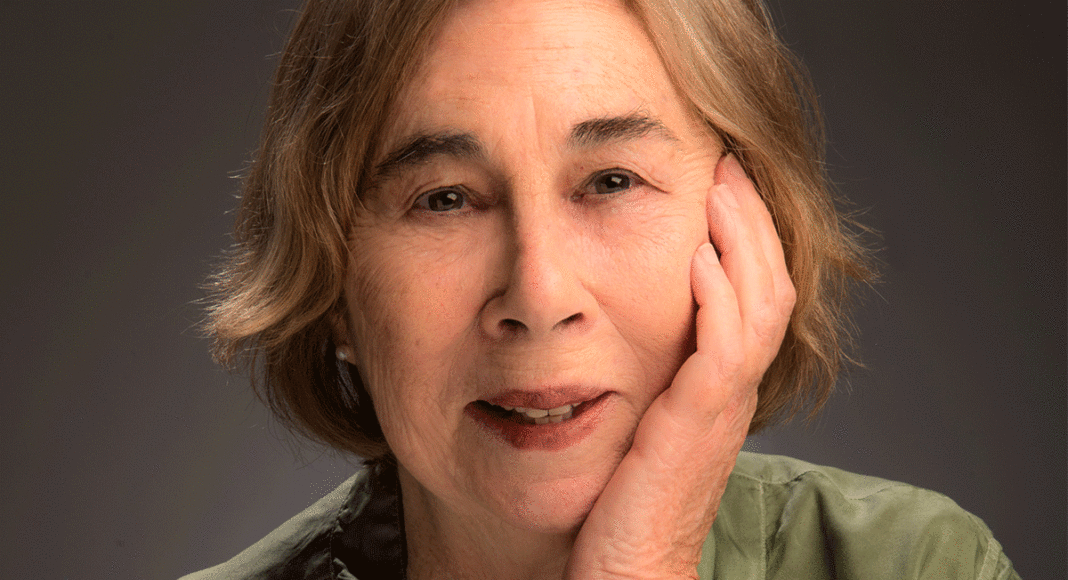The voluminous correspondence of four charismatic companions inspires Carolyn Burke’s latest forensic biography. Her impressive new book Foursome provides, among other things, a compelling portrait of American modernism in the making.
The players here are no less than iconoclastic painter Georgia O’Keeffe and her mentor and lover, the domineering photographer Alfred Stieglitz, whose artistic circle—Edward Steichen, Arthur Dove, John Marin, Marsden Hartley, Paul Strand, and Edward Weston—shaped the paradigm for American visual art.
Burke’s exploration expands beyond the two better-known artists to include Strand, an acolyte of Stieglitz who went on to document proletariat struggles in Mexico and various emerging nations, as well as his wife Rebecca Salsbury, who for a decade was O’Keeffe’s close companion. (How close? Well, you’ll need to read the book to decide.) Yet it is O’Keeffe and Stieglitz who emerge most indelibly. Their mercurial, often maniacal devotion to their art and to each other practically leaps off Burke’s absorbing pages.
Eager to establish himself as an arbiter of the American avant garde, Stieglitz initiated the influential 291 gallery on Fifth Avenue after the Great War. Stieglitz’s quest for new talent led him to O’Keeffe, a young school teacher. Upon first seeing her charcoal drawings in 1915, he exclaimed, “Finally, a woman on paper. A woman gives herself.”
The moment when O’Keeffe and Stieglitz caught fire, both personally and professionally, came at the 1918 exhibition of his nude photographs. The sensual photographs of O’Keeffe’s torso and breasts created a media sensation. From then on, their careers became the stuff of gossip, praise and legend.
The central core of Burke’s research, including key illustrations, chronicles the years from 1920-1934, during which the four companions wove a web of mutual flirtation, seduction, artistic experimentation, jealousy, betrayal, and fame.
Burke quotes lavishly from what must have been a blizzard of letters among the four, as well as their other paramours. Wary of being psychoanalyzed by male critics, O’Keeffe hoped for a female interpreter, and in the late ’20s approached Mabel Dodge, whose artist colony at Taos had hosted D.H. Lawrence, Carl Jung and Henry Miller.
“I feel there is something unexplored about women that only a woman can explore,” O’Keeffe wrote to Dodge.
Taos enchanted both O’Keeffe and Salsbury, who drove out to New Mexico together in the spring of 1929. “We have had a beautiful relationship together, and feel the need of nobody else,” Beck wrote to her husband. “I am entirely myself in her company.”
Over the course of endless transformative discoveries, O’Keeffe’s work became internationally famous. The shadow of Stieglitz was long indeed, but not long enough to contain the willful and promiscuous O’Keeffe, whose genius was matched by her stunning independence. She was the first woman to have a retrospective at the Museum of Modern Art, in 1946. As Stieglitz—23 years her senior—grew crusty and narcissistic, O’Keeffe reinvented herself and her interests in New Mexico, eventually moving there permanently while Stieglitz found new female acolytes to tend his hearth and other needs. But as the letters show, their love was strong and passionate to the very end of Stieglitz’s life in 1946 at the age of 81.
O’Keeffe flourished for another 40 years as a painter, proto-feminist, and connoisseur of the southwest. Her own fame ebbed and flowed, but what emerges most vibrantly in Burke’s text is O’Keeffe’s courage in rejecting the status quo. The book shows us a woman unafraid to love deeply without ever objectifying herself for a man’s approval—a stunning achievement in any era. While we never catch as full a glimpse of Salsbury, Burke’s pages show her as a woman in pursuit of elusive accomplishment. Similarly, the methodical Strand seems to have stultified true fulfillment. Stieglitz emerges as a man of great power and influence, yet Foursome’s letters and Burke’s analysis show him to be an unlikeable neurotic and controlling keeper of his own legacy.
The courageous biographer must take her subjects—flaws, strengths and all—and shape them into flesh-and-blood moments of history. Burke succeeds brilliantly.
Carolyn Burke will read from and sign her new book ‘Foursome’ at 7 p.m. on Wednesday, March 13, at Bookshop Santa Cruz, bookshopsantacruz.com/carolynburke.












